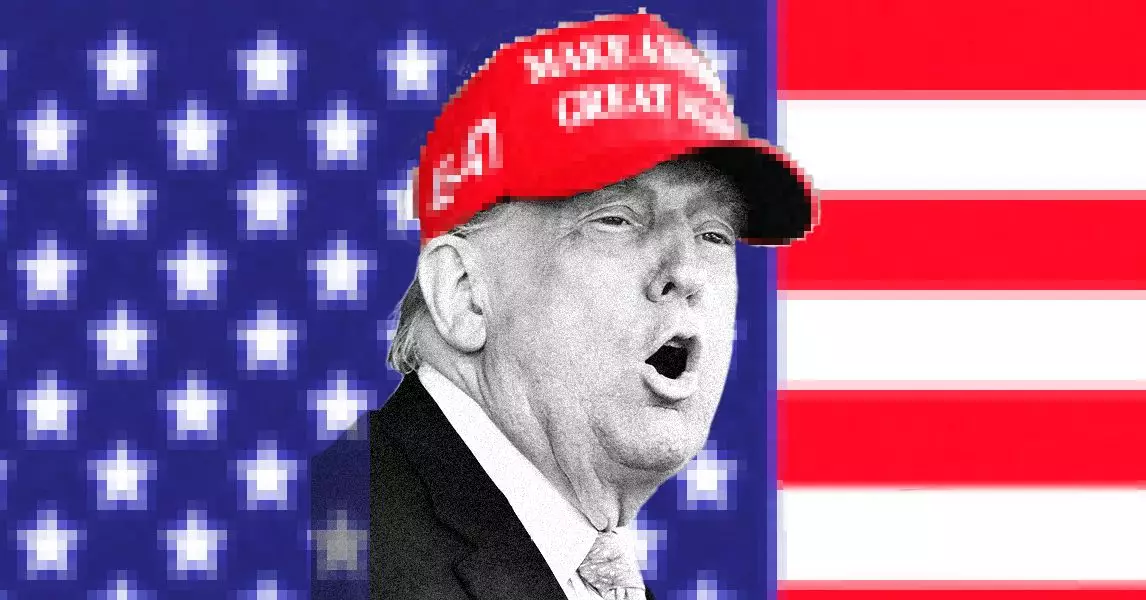The recent release of the Trump Administration’s sweeping AI action plan signals a transformative shift in the United States’ approach to artificial intelligence. Framed as a battle for technological supremacy, the plan aggressively champions deregulation and expansive infrastructure investment. At its core, it seeks to position America at the forefront of global AI innovation by fostering an environment where tech giants can operate with minimal bureaucratic encumbrance. This document isn’t merely about technological progress; it embodies a broader ideological stance that prioritizes rapid growth, national competitiveness, and a resistance to what it perceives as excessive regulatory control, often associated with the previous Biden administration.
The emphasis on “accelerating AI innovation” and “building infrastructure” reveals a strategic mindset that views AI as a critical component of national security and economic power. Instead of approaching AI with caution, the plan advocates for a proactive, almost reckless push, aiming to outpace China—a narrative that simplifies a complex geopolitical battlefield into a binary race. While competitiveness is important, this untempered acceleration risks overlooking the deeper ethical, societal, and safety issues that tagged along with AI’s rapid expansion. The plan’s rhetoric suggests a belief that technology will naturally correct itself if the regulatory hand is loosened enough. However, history warns us that unregulated innovation often leads to unforeseen consequences, from privacy violations to pandemic-level cyber vulnerabilities.
Regulation or Rampant Risk? A Question of Balance
One of the most contentious aspects of this new strategy is its relaxation of regulatory standards. The document explicitly recommends that federal agencies evaluate whether existing AI regulations hinder innovation, effectively signaling a rollback of oversight. Notable is the push for the Federal Communications Commission to assess whether state-level regulations obstruct federal objectives. The phrase “build, baby, build” encapsulates a laissez-faire attitude, implying that technological progress should take precedence over cautious oversight.
Critics might argue that such an approach dangerously underestimates the risks associated with unbounded AI development. Issues like algorithmic bias, misinformation, and potential misuse as weapons are brushed aside as hurdles to be swept away rather than challenges to be managed. The plan’s dismissive tone towards climate and bureaucratic impediments also raises questions about the prioritization of energy and infrastructure needs—potentially ignoring the environmental costs of large-scale AI data centers and associated energy consumption.
Moreover, the plan’s emphasis on “objective” AI systems that are “free from ideological bias” is notably at odds with the realities of AI training, which inherently reflect data and societal biases. The push to enforce strict procurement guidelines that favor “unbiased” AI may ultimately stifle diversity of thought and innovation, creating a reductive landscape where only certain types of AI systems get federal support. This signals a desire not merely for technological advancement, but for ideological control, ensuring AI aligns with a specific vision of American values—perhaps that of unregulated capitalism, free speech, and skepticism toward institutional oversight.
A Return to a Pro-Business, Anti-Regulatory Paradigm
This strategy is fundamentally rooted in a political philosophy that champions the free market as the best engine for technological progress. The Trump Administration’s commitment to reducing bureaucratic red tape echoes past policies aimed at invigorating American industries. By advocating for deregulation and deregulation-friendly policies, the plan seeks to empower Silicon Valley’s dominant corporations, giving them freer rein to push boundaries and innovate without perceived interference.
In essence, this approach relies heavily on the assumption that private sector innovation, left largely to its own devices, will naturally foster breakthroughs that secure America’s competitive edge. To this end, the plan strongly opposes attempts to impose strict controls or ethical guardrails, instead framing them as threats to progress. The emphasis on “objective” AI and opposition to “woke” influence further reveals an ideological underpinning aimed at controlling the narrative and the kind of AI that gets government contracts.
However, such a stance risks creating a loophole-laden ecosystem where corporate interests can dominate, potentially leading to a future where AI is developed without sufficient ethical considerations. This could exacerbate societal inequalities, demand unchecked surveillance measures, and accelerate the concentration of power within a few tech giants. While economic growth is vital, a reckless pursuit of dominance at any cost might compromise the very fabric of democratic accountability and societal well-being.
This bold push toward an unregulated, innovation-first paradigm reflects a broader belief that American supremacy in AI is worth any potential societal or ethical cost. Whether this will translate into sustainable leadership or an unchecked arms race in AI remains to be seen. What is clear is that this approach prioritizes power and competitiveness over caution, aiming to secure America’s position at the technological summit—regardless of the long-term consequences.


Leave a Reply